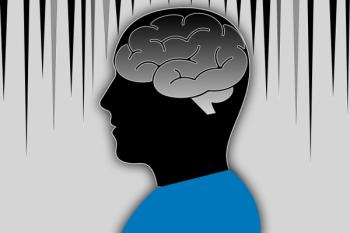
- Vol 39, Issue 1
Lyme Disease in Psychiatry: Controversies, Chronic Symptoms, and Recent Developments
In this CME article, learn more about the controversies surrounding Lyme disease diagnosis and treatment, and common neuropsychiatric presentations of and treatment options.
CATEGORY 1 CME
Premiere Date: January 20, 2022
Expiration Date: July 20, 2023
ACTIVITY GOAL
The goal of this activity is to better appreciate the controversies surrounding Lyme disease as well as methods to treat the neuropsychiatric sequela.
LEARNING OBJECTIVES
• Understand the controversies surrounding Lyme disease diagnosis and treatment, including perspectives of different medical communities and patient communities
• Describe common neuropsychiatric presentations of and treatment options for Lyme disease and of posttreatment Lyme disease (PTLD)
TARGET AUDIENCE
This accredited continuing education (CE) activity is intended for psychiatrists, psychologists, primary care physicians, physician assistants, nurse practitioners, and other health care professionals seeking to improve the care of patients with mental health disorders.
ACCREDITATION/CREDIT DESIGNATION/FINANCIAL SUPPORT
This activity has been planned and implemented in accordance with the accreditation requirements and policies of the Accreditation Council for Continuing Medical Education (ACCME) through the joint providership of Physicians’ Education Resource®, LLC, and Psychiatric TimesTM. Physicians’ Education Resource®, LLC, is accredited by the ACCME to provide continuing medical education for physicians.
Physicians’ Education Resource®, LLC, designates this enduring material for a maximum of 1.5 AMA PRA Category 1 Credits™. Physicians should claim only the credit commensurate with the extent of their participation in the activity.
This activity is funded entirely by Physicians’ Education Resource®, LLC. No commercial support was received.
OFF-LABEL DISCLOSURE/DISCLAIMER
This accredited CE activity may or may not discuss investigational, unapproved, or off-label use of drugs. Participants are advised to consult prescribing information for any products discussed. The information provided in this accredited CE activity is for continuing medical education purposes only and is not meant to substitute for the independent clinical judgment of a physician relative to diagnostic or treatment options for a specific patient’s medical condition. The opinions expressed in the content are solely those of the individual faculty members and do not reflect those of Physicians’ Education Resource®, LLC.
FACULTY, STAFF, AND PLANNERS’ DISCLOSURES AND CONFLICT OF INTEREST (COI) MITIGATION
The peer reviewer and staff members of Physicians’ Education Resource®, LLC, and Psychiatric Times™ have no relevant financial relationships with commercial interests.
None of the staff of Physicians’ Education Resource®, LLC, or Psychiatric TimesTM, or the planners or the authors of this educational activity, have relevant financial relationship(s) to disclose with ineligible companies whose primary business is producing, marketing, selling, reselling, or distributing health care products used by or on patients.
For content-related questions, email us at
HOW TO CLAIM CREDIT
Once you have read the article, please use the following URL to evaluate and request credit:
Since its first appearance in a group of children in Old Lyme, Connecticut in the late 1970s,
Even after appropriate diagnosis and antibiotic treatment, some patients continue to experience longer-term symptoms, including
The Infectious Disease Society of America (IDSA), American Academy of Neurology (AAN), and American College of Rheumatology (ACR) published joint “2020 Guidelines for the Prevention, Diagnosis and Treatment of Lyme Disease”4 that included commentary on the terminology chronic Lyme disease, commonly used in the patient community, expressing concern that it lacks an accepted definition and is applied to a highly heterogeneous population who may have weak clinical or laboratory evidence to confirm prior infection with B burgdorferi. Although the IDSA had previously developed provisional criteria for the more specific subgroup of PTLD, a term preferred by some researchers as it suggests a well-documented prior diagnosis of Lyme disease, they do not mention this term in their latest guidelines and instead refer to “persistent or recurring nonspecific symptoms such as fatigue,
The Scope of the Problem and the “Lyme Wars”
There has been conflict and controversy surrounding Lyme disease since its earliest days. In 1970s Connecticut, mothers of children with unusual arthritis symptoms were angered due to feeling dismissed or ignored by public health officials after little was initially done when they told the officials of this unusual clustering of children with arthritis. In the decades following, intense disagreement continued among professional organizations, community doctors, and patients about what is required for a diagnosis of Lyme disease and what constitutes adequate treatment. The most pressing debates today involve how to treat PTLDS.
The recent joint IDSA/AAN/ACR guidelines recommend against repeat antibiotic treatment for patients with persistent or recurring nonspecific symptoms (eg, fatigue) who do not have objective evidence of reinfection with B burgdorferi or treatment failure (
The International Lyme and Associated Diseases Society (ILADS) guidelines (
Given the substantial overlap in symptomatology between Lyme disease and common psychiatric disorders, as well as the psychological effects that can result from a
Case Vignette
“Christina,” aged 45 years, is a mother of 2 children who presented reporting several months of low mood, fatigue, subjective memory problems, and headaches. She tearfully explained that she could barely function and reported feeling dismissed by her primary doctor. Christina briefly saw a therapist in college for stress related to a relationship breakup, but she otherwise has had no history of psychiatric treatment. She had a recent unremarkable exam, including vitals and basic blood work, by her primary doctor, who referred her to the psychiatry department for
Christina was started on sertraline 50 mg with some mild improvement in low mood, but had ongoing fatigue, memory issues, and
Christina received treatment with a course of doxycycline and experienced improvement in her fatigue, headaches, and mood. Two months later, she returned with worsening fatigue and headaches. Looking to the IDSA/AAN/ACR guidelines, Christina’s primary doctor recommended against retreatment with
Beyond the Rash: Signs and Symptoms
Lyme disease can develop after an infected Ixodes scapularis tick bites human skin. Usually, at least 36 hours, and sometimes up to 72 hours of attachment is required to transmit the infection. Notably, Ixodes scapularis ticks may also transmit other infections, including Babesia microti, Anaplasma phagocytophilum, Borrelia miyamotoi, and others. In 70% to 80% of Lyme cases, an erythema migrans rash will develop at the site of the bite, often within 3 to 32 days.2 The rash typically starts as a red patch, that measures approximately 2 or more inches in diameter. This rash is not painful, but it expands over time and may have satellite rashes. As it grows, the initial patch may develop a central clearing, giving it a classic bullseye appearance (
Dissemination of infection beyond the initial localized area can result in a multitude of other symptoms in the following weeks to months. Because the initial immunologic response to Lyme disease involves the release of cytokines, many patients will experience moderate to severe flu-like symptoms during the early disseminated phase of infection (
Months to years later, if Lyme disease goes untreated, patients may experience late disseminated–stage symptoms, many of which can overlap with symptoms of primary psychiatric illness. Such patients may develop neurological problems that include
Although psychiatric problems can arise during the illness course, it is important to communicate to patients that most psychiatric symptoms in the general population are unrelated to Lyme disease. Treatment of such potentially disabling psychiatric disorders should not be delayed while trying to determine whether or not a patient has Lyme disease. Patients with preexisting anxiety may catastrophize and hyper-focus on information from the media that presents the most frightening consequences of their possible Lyme disease. It may be helpful to explain that whether or not a patient has Lyme disease, treatment of any cooccurring psychiatric disorder, such as major depression or panic disorder, is an essential part of the path to health.
It is also important to note that anchoring to Lyme disease early on, to the exclusion of consideration of other possibilities, can delay diagnosis of other serious medical conditions. The differential diagnosis for neuropsychiatric Lyme disease and PTLDS is wide and includes other tick-borne diseases, psychiatric disorders, autoimmune disease, multiple sclerosis,
The Types and Limitations of Testing
The ideal diagnostic test for Lyme disease would clearly indicate the presence of B burgdorferi and activity or resolution of infection. Unfortunately, available tests fall short of this ideal, leading to conflict over diagnosis and treatment.
Two commonly available blood tests for Lyme disease are the ELISA and Western blot assay. The ELISA is an inexpensive, widely available, quantitative assay that reflects the magnitude of the antibody response (IgM and IgG) to spirochetal proteins. The Western blot assay (IgM and IgG) is an antibody-based test that detects binding of serum antibodies to an array of Borrelia antigens; it previously required interpretation by a skilled laboratory technician, but more recent developments have allowed interpretation by optical scanners. The IgG Western blot is considered highly specific for confirmation of current or past infection with B burgdorferi, while the IgM Western blot is less specific and may result in false positives.
In the 1990s, the CDC recommended a 2-tier testing approach to enhance diagnostic standards (
A central problem, therefore, in the 2-tiered method is that sensitivity varies considerably depending upon on how early in the course of infection a patient is tested and on the specific manifestations of
For suspected neurologic Lyme disease, lumbar puncture is indicated. In central neurologic Lyme disease, CSF analysis typically shows elevated lymphocyte and protein levels with normal glucose levels. Comparing the ratio of antibody levels in the CSF to blood collected on the same day allows determination of the intrathecal index which can provide strong evidence in support of the diagnosis of neurologic Lyme disease. The presence of B burgdorferi DNA on polymerase chain reaction testing is also strong evidence for Lyme disease; however, this test has substantial rates of false negatives among patients with neurologic Lyme disease and thus should not be used to disqualify a patient for antibiotic treatment. Structural and functional MRI as well as single-photon emission computed tomography and positron emission tomography scans have been used adjunctively to aid in diagnosis, but they are not sensitive or specific and may be costly or impractical in some clinical settings.
Neuropsychological testing may be helpful in supporting a diagnosis or measuring response to treatment, with studies showing the most consistently identified deficits in adults with Lyme disease to be problems with verbal memory, information processing speed, and memory-related tasks.11 However, this too can be costly and it yields nonspecific results.
Given the limitations of available tests, diagnosis for Lyme disease must be made considering factors such as the patient’s history of tick exposure, time spent in Lyme disease–endemic areas, clinical symptoms, and laboratory findings. Exciting developments are underway in Lyme disease testing, such as urine-based proteomic assays, blood-based metagenomic assays, and point of care tests, that hopefully will improve diagnostic accuracy and reduce delays in the provision of treatment.9
Treatment of Lyme Disease and PTLDS
Because the diagnosis of Lyme disease is easy to confirm when the erythema migrans rash is present, the research community previously focused its efforts on studying the treatment of early Lyme disease; there have been fewer controlled studies of the later manifestations. Treatment of erythema migrans in adults includes a 10-day course of doxycycline or a 14-day course of cefuroxime or amoxicillin. This results in remission and apparent cure in most cases. Adults with Lyme arthritis can be treated with 28 days of oral doxycycline or amoxicillin. If
When Lyme-triggered symptoms return or persist despite the standard antibiotic recommendations, considerable controversy arises over how to treat these patients. Approximately 10% to 20% of patients treated for Lyme disease have symptoms that can last for more than 6 months and even years after treatment.2,3 Common symptoms include muscle and joint pains, brain fog, fatigue, and
There have been 4 controlled studies of repeated antibiotic therapy for patients with PTLDS in the United States. In 2001, Klempner et al conducted 2 studies (1 for Lyme seropositive patients and 1 for seronegative individuals) randomizing patients to either 1 month of IV ceftriaxone followed by 2 months of oral doxycycline or IV placebo followed by oral placebo.12 Ultimately, no difference was found on the self-reported functional disability outcome measure between the antibiotic and placebo groups. The authors also noted that the treatment itself can cause significant risk, such as
In 2008, Fallon et al randomized patients with Lyme encephalopathy to 10 weeks of IV ceftriaxone or placebo.14 There was overall greater cognitive improvement in the drug-treated group that was apparent at 3 months compared with the placebo group (P = .053), but this improvement was not sustained to 6 months. The authors argued that better treatments resulting in sustained cognitive improvement are needed. When the study was reanalyzed using the methods employed by Krupp et al in their fatigue study, very similar significant findings were found—nearly two thirds showed clinically meaningful reduction in fatigue after IV ceftriaxone compared to only 25% on IV placebo. Interpretation of these 4 studies has varied significantly from the IDSA/AAN/ACR guidelines, which largely recommend against retreatment with antibiotics for patients with PTLDS, to ILADS and others who argue retreatment should be considered for debilitating fatigue, as the only randomized controlled trial designed to assess fatigue found significant and clinically meaningful improvement on the primary fatigue outcome measure.15
Several hypotheses exist to explain persistent symptoms after treatment for Lyme disease. One hypothesis is that such symptoms may represent an immune response to persistent infection with B burgdorferi. To date, multiple studies in animals have shown that B burgdorferi spirochetes can persist following standard recommended antibiotic treatment of a disseminated infection. Less often, case studies in humans have documented persistent bacteria, though it remains unclear whether these spirochetes are metabolically active or causing clinical disease.16 Other hypotheses include postinfectious processes that result in ongoing immune dysregulation, neural network dysregulation such as central sensitization, and preexisting vulnerability to anxiety and somatization.9 However, the exact cause of persistent symptoms is still not well understood, may be complex and multifactorial, and likely differs depending on the patient. A thorough medical evaluation to rule out tick-borne coinfections such as Babesia microti or Borrelia miyamotoi and other unrecognized
Patients with persistent symptoms after Lyme disease treatment may find that their family, friends, and doctors start to question why they still have symptoms, sometimes leading them to feel hurt, disbelieved, and defensive. Ironically, some of the problems typical of PTLDS may well be “in the head” as a result of neural changes induced by the Lyme disease infection or due to the
There is no specific proven treatment for PTLDS at this time, but many patients find that typical treatments offered by psychiatrists can result in decreased pain, increased energy, better cognition, and enhanced quality of life. Additional research is underway internationally to better understand this complex illness, enhance diagnostic accuracy, and improve treatment outcomes.9
Concluding Thoughts
Lyme disease is a growing public health problem in the United States. If a sensitive and reliable test of active infection were available, much of the conflict around diagnosis and treatment would be diminished. This is the holy grail that scientists continue to seek. It is important to remember that symptoms of PTLDS (eg, fatigue, head/body aches, sleep difficulties, low mood, irritability, memory problems) can overlap substantially with those of common psychiatric disorders. The treatment approach should be based on the cause—persistent infection, postinfectious factors, or another more likely diagnosis. When psychiatric features are present, the psychiatric care should be optimized to enhance the likelihood of reduced suffering and optimal outcome. As a clinician, you should approach patients with PTLDS or chronic Lyme disease symptoms with humility and compassion, assuming they have been disbelieved by many. Advocate for additional medical workup when appropriate and treat their symptoms with appropriately targeted therapies.
Dr Sotsky is a fellow in consultation-liaison psychiatry at Columbia University Irving Medical Center with a part-time private practice; she formerly was a chief resident at Columbia’s psychiatry residency program. She is co-author of Conquering Lyme Disease: Science Bridges the Great Divide.
References
1. Kugeler KJ, Schwartz AM, Delorey MJ, et al.
2. Tickborne diseases of the United States: Lyme disease. Centers for Disease Control and Prevention. Reviewed October 1, 2020. Accessed November 15, 2021.
3. Marques A.
4. Lantos PM, Rumbaugh J, Bockenstedt LK, et al.
5. Cameron DJ, Johnson LB, Maloney EL.
6. Fallon BA, Nields JA.
7. Fallon BA, Maden T, Erlangsen A, Benros ME.
8. Nelson C, Elmendorf S, Mead P.
9. Fallon B, Sotsky J. Conquering Lyme Disease: Science Bridges the Great Divide. Columbia University Press; 2018.
10. Mead P, Petersen J, Hinckley A.
11. Rebman AW, Aucott JA.
12. Klempner MS, Hu LT, Evans J, et al.
13. Krupp LB, Hyman LG, Grimson R, et al.
14. Fallon BA, Keilp JG, Corbera KM, et al.
15. Fallon BA, Petkova E, Keilp JG, Britton CB.
16. Bobe JR, Jutras BL, Horn EJ et al.
Articles in this issue
almost 4 years ago
Pharmacological Management of Treatment-Resistant Anorexia Nervosaalmost 4 years ago
Treatment-Resistant OCD: Strategies and Novel Treatment Optionsalmost 4 years ago
The Current State of the Art and the Not Too Distant Futurealmost 4 years ago
5 Crypto Investing Rules for Busy Doctorsalmost 4 years ago
What Can Philosophy Learn From Madness?almost 4 years ago
Tender Fencesalmost 4 years ago
Doorknob Moments: Why They Happen and How to Use Themalmost 4 years ago
Advances in Treatments for ADHDNewsletter
Receive trusted psychiatric news, expert analysis, and clinical insights — subscribe today to support your practice and your patients.

















